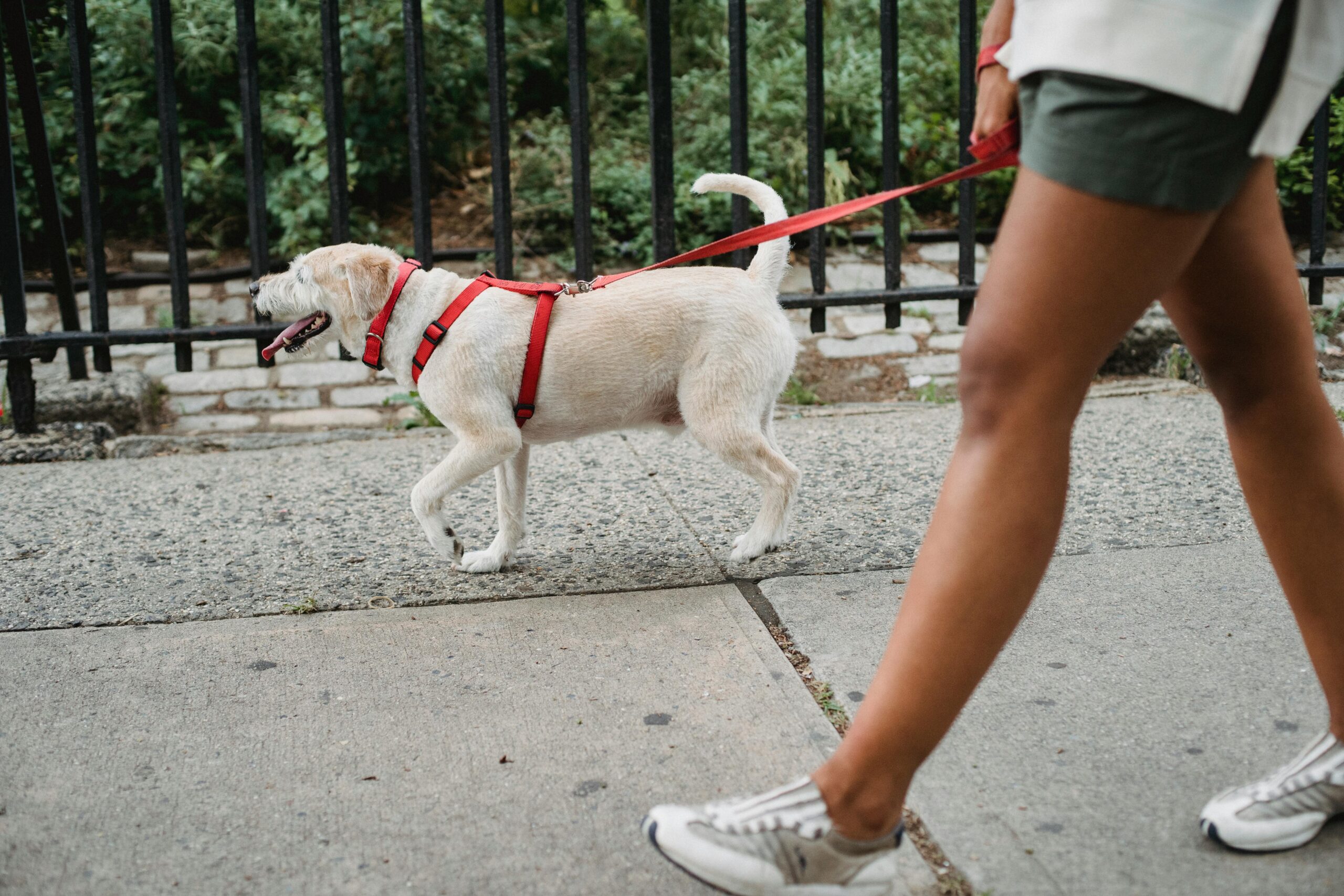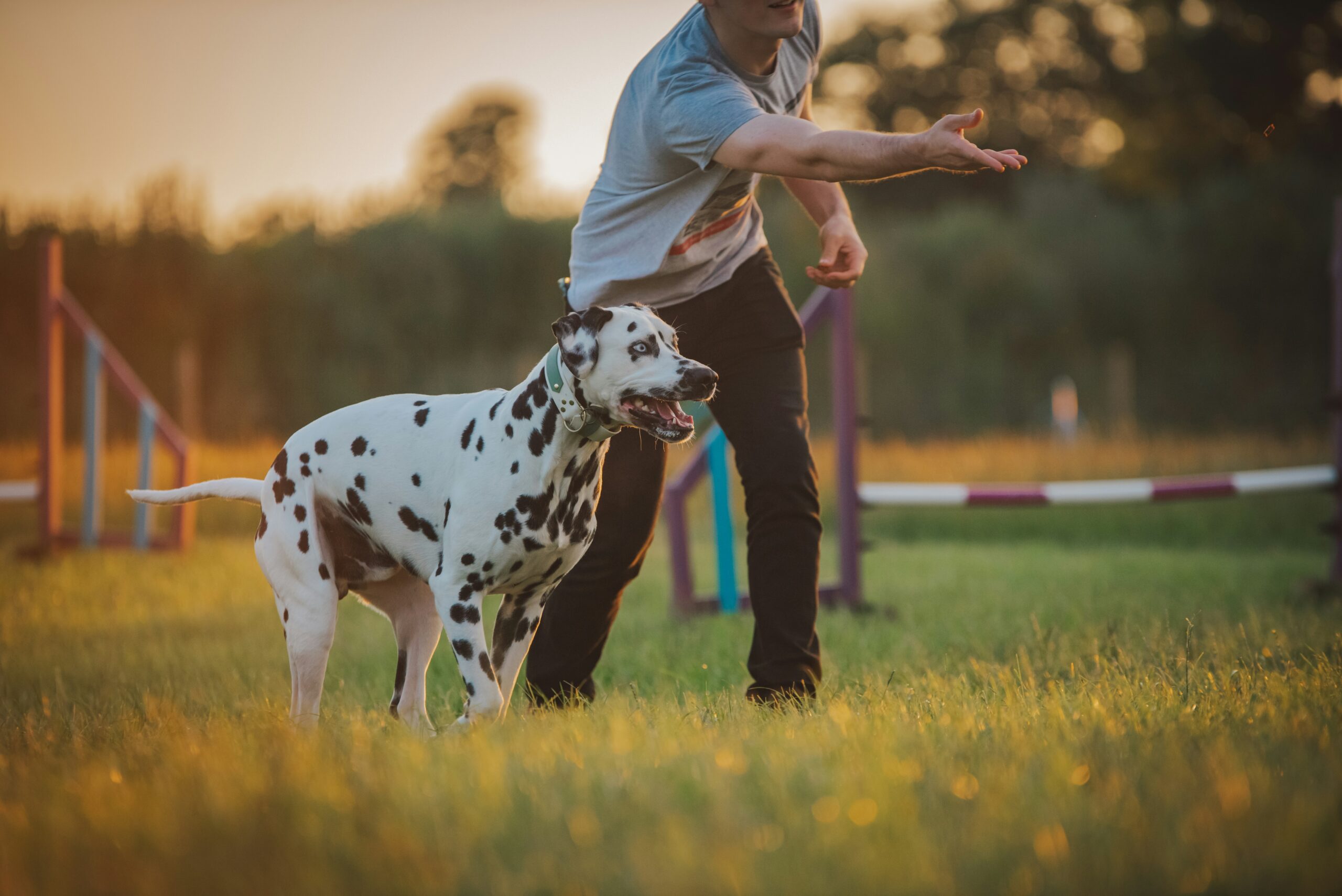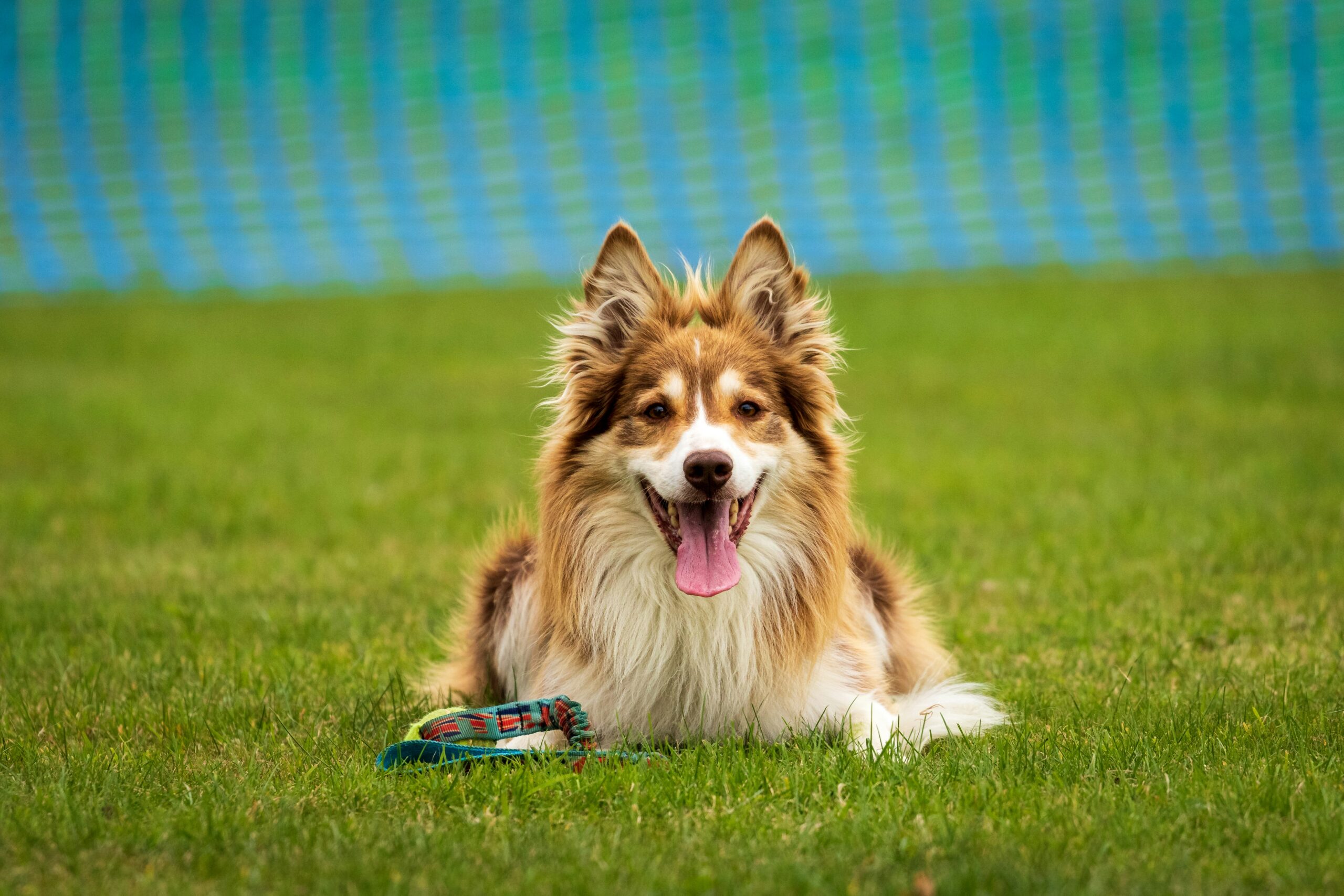Leash Training Made Easy: A Simple Guide for Every Dog Owner
Understanding the Importance of Leash Training
Leash training is a critical aspect of responsible dog ownership that benefits both the dog and the owner. For many pet owners, the experience of walking a dog should be an enjoyable and safe venture. Proper leash training significantly enhances this experience, paving the way for safer walks and better overall behavior in public spaces. A well-trained dog is less likely to pull, lunge, or become distracted, making walks more pleasant for everyone involved.
One of the primary benefits of effective leash training is the promotion of safety. In urban environments, dogs can be exposed to various distractions, including other animals, pedestrians, and vehicles. By teaching your dog how to walk calmly on a leash, you reduce the risk of accidents, such as escaping or getting involved in altercations with other dogs. Additionally, a well-trained dog is less likely to dart into traffic or wander off, providing peace of mind for the owner.
Moreover, leash training fosters better behavior in social settings. When dogs are accustomed to being on a leash, they learn to remain calm and focused, even in busy or chaotic environments. This is particularly beneficial during visits to parks, pet-friendly stores, or on public transport. Owners can feel more confident knowing that their dogs are well-behaved, which can also lead to positive interactions with other dog owners and the public.
Beyond the practical advantages, leash training significantly strengthens the bond between the dog and the owner. Through consistent training sessions, both parties develop a deeper understanding of each other’s signals and preferences. This mutual respect and trust can transform the owner-dog relationship, leading to a happier and healthier companionship. In summation, effective leash training is essential for every dog owner, as it promotes safety, encourages good behavior, and enhances the bond shared between owner and pet.
Common Challenges in Leash Training
Leash training is an essential skill for both dogs and their owners, facilitating enjoyable walks and ensuring the safety of pets and pedestrians alike. However, many dog owners encounter common challenges during this process. One of the most prevalent issues is pulling. Dogs, driven by their natural instincts and curiosity, often pull on their leashes, which can lead to an uncomfortable experience for the owner. This behavior usually stems from excitement about exploring their environment, and if left unaddressed, it can develop into a habit that makes walks stressful.
Jumping is another challenge frequently observed in leash training. Many dogs, especially younger ones, may become overly excited upon seeing people or other animals. This can lead to unwanted jumping, which not only disrupts the training process but may also pose a risk of injury to both the dog and others. Such behaviors typically arise from a lack of impulse control and a strong desire for social interaction.
Distractions in the environment can further complicate leash training. Noisy streets, other dogs, or sudden movements can divert a dog’s attention, leading to erratic behavior. In these instances, nervousness can manifest as pulling or barking. On the flip side, a highly excited dog might have difficulty focusing on the owner, making consistent leash handling a challenge. It’s important for owners to understand that these behaviors are often a reflection of a dog’s personality and past experiences.
Addressing these challenges involves patience and practice. Understanding the underlying reasons for pulling, jumping, and distractions can help owners implement effective training techniques. With time and consistency, most dogs can learn to walk calmly on a leash, transforming walks into enjoyable experiences.
Essential Equipment for Leash Training
Leash training is a fundamental aspect of dog ownership that requires appropriate equipment to ensure both comfort and effectiveness. One of the primary pieces of gear is the dog collar. Collars come in various styles such as flat collars, martingale collars, and head halters. Flat collars are suitable for everyday use and identification, while martingale collars offer more control for dogs prone to pulling. Head halters can assist in redirecting a dog’s focus, which might be beneficial for training.
Another essential item is a harness. Harnesses are particularly advantageous for leash training, especially for small dogs or those with respiratory issues, as they distribute pressure more evenly across the body. There are two main types of harnesses: back-clip and front-clip. Back-clip harnesses are generally easier to put on and are suitable for relaxed walkers. On the other hand, front-clip harnesses can help prevent pulling by steering the dog back toward the owner when they attempt to tug.
The choice of leash is equally important. Standard nylon or leather leashes provide durability, while retractable leashes offer flexibility for training in open spaces. However, for leash training, fixed-length leashes are recommended to promote better control. Depending on the dog’s size and temperament, leash length can vary, with a typical range being between four to six feet to maintain an optimal distance for training.
Finally, when selecting the appropriate gear, consider your dog’s size and temperament. A larger, more energetic dog may require sturdier equipment than a smaller, calmer breed. Always ensure that any gear is fitted correctly and allows for comfort and safety during training sessions. Proper equipment guides the training experience, enabling a more effective and pleasant leash walking experience for both the dog and owner.
Preparing for Successful Leash Training Sessions
Successful leash training is pivotal in fostering a positive relationship between a dog and its owner. To achieve effective training sessions, it is crucial to create an environment conducive to learning. This begins with establishing realistic goals that cater to both the dog’s age and temperament. Understanding that every dog is unique allows owners to tailor their expectations and timelines. For instance, a puppy may need more patience and shorter training intervals compared to an adult dog who may have some prior experience.
Choosing the right location for training sessions plays a significant role in a dog’s ability to learn. Opt for a quiet area, free from excessive distractions, such as loud noises or crowded spaces. Parks during off-peak hours can be ideal, allowing dogs to focus on their owner’s directions without being overwhelmed. Gradually, as the dog becomes more familiar with leash commands, owners can introduce challenges, such as busier locations, to reinforce training under varied circumstances.
Moreover, ensuring that a dog is mentally and physically prepared is essential for effective learning. Prior to training sessions, consider engaging your dog in a brief exercise or play session. This helps channel excess energy, allowing the dog to concentrate better during training. Additionally, incorporate regular breaks within the training routine. This approach not only maintains the dog’s interest but also prevents fatigue, which can lead to frustration. Positive reinforcement, such as treats or praise, should be utilized consistently to encourage desirable behaviors, ensuring a strong foundation for future learning.
By setting achievable goals, selecting appropriate training locations, and preparing the dog adequately, dog owners can significantly enhance the effectiveness of their leash training efforts, ensuring a rewarding experience for both parties involved.
Step-by-Step Guide to Leash Training Your Dog
Leash training is a fundamental skill for every dog owner, fostering safety and good behavior during walks. This step-by-step guide will assist you in effectively training your dog to walk on a leash without pulling or becoming distracted. The first step is to choose the right equipment; a flat collar or harness, along with a comfortable leash, is essential. Ensure the collar fits snugly, allowing two fingers to slide between it and the dog’s neck.
Once equipped, introduce your dog to the leash. Allow your pet to become accustomed to the feel of the leash by letting it drag on the ground during indoor play. This early exposure helps reduce any anxiety associated with the leash. Proceed to attach the leash and encourage your dog to move beside you using positive reinforcement techniques. Monitor for any signs of pulling, and as soon as your dog starts to pull, stop walking. This teaches the dog that pulling does not yield progress.
Use a command such as “heel” or “let’s go” to guide your dog alongside you. When they walk beside you without pulling, offer verbal praise and treats. To practice, start in a familiar environment with minimal distractions; gradually introduce your dog to more crowded or stimulating areas as it becomes more proficient in leash training. Changing your direction frequently can also help maintain your dog’s focus and engagement during walks.
Be consistent with your training sessions, keeping them short yet effective, typically lasting around 10 to 15 minutes. Lastly, be patient. Different dogs learn at varying paces, influenced by their age, breed, and past experiences. As you systematically implement this leash training guide, you will foster a positive walking experience, enhancing the overall relationship between you and your dog.
Positive Reinforcement Strategies for Training
Leash training can be a challenging yet rewarding experience for dog owners. One of the most effective methods for training is the use of positive reinforcement strategies. This approach focuses on rewarding desired behaviors, which encourages dogs to repeat those actions in the future. Positive reinforcement not only strengthens the bond between the dog and the owner but also creates a more enjoyable walking experience for both parties.
When implementing positive reinforcement during leash training, it is essential to identify the specific behaviors that you would like to encourage. For instance, rewarding your dog when they walk calmly beside you can reinforce good leash manners. Offering treats, verbal praise, or engaging in a favorite game as a reward can significantly boost a dog’s motivation to behave well on walks. The key is to ensure that rewards are given immediately after the desired behavior occurs, so your dog associates the action with the positive outcome.
Using treats is one of the most common forms of reinforcement. It is important to select high-value treats that your dog finds particularly enticing. This is especially useful in distracting environments where your dog may be more likely to act out. As the dog begins to associate walking calmly with receiving treats, this behavior will become more consistent over time.
In addition to treats, verbal praise can be a powerful tool in a positive reinforcement strategy. A simple “good boy” or “well done” can make a significant difference in a dog’s behavior. Such encouragement can often be more impactful than treats, particularly as your dog becomes more proficient in leash training. Incorporating playtime as a reward also serves to reinforce positive actions, providing an outlet for energy and enthusiasm.
Building a reward-based system requires consistency and patience. Be sure to apply the same strategy across different scenarios and environments. Over time, with repetition and reinforcement, your dog will learn to associate good behavior on the leash with positive outcomes, making walks pleasurable for both of you.
Addressing Setbacks and Stubborn Behaviors
Leash training can present numerous challenges, particularly when faced with setbacks and stubborn behaviors exhibited by some dogs. It is vital for owners to recognize that deviations from expected progress are a normal part of the training process. Understanding these setbacks can be instrumental in adjusting training techniques effectively. For instance, if a dog displays reluctance to respond to commands or demonstrates stubbornness while on a leash, it may be beneficial to evaluate the circumstances surrounding these behaviors.
One effective strategy for managing frustration is to break down training sessions into shorter, more engaging segments. Dogs can easily become distracted or fatigued, and a focused session lasting 5 to 10 minutes may yield better results than a prolonged session. During this time, it is advisable to provide frequent breaks and positive reinforcement, which helps maintain the dog’s interest and fosters a positive training atmosphere. If traditional methods are met with resistance, integrating play into the leash training process can significantly improve a dog’s engagement and willingness to follow commands.
Patience plays a crucial role in overcoming these challenges. Rather than forcing a dog to comply, owners should allow their pets to explore their environment within the confines of leash boundaries. This exploration can serve as a motivation for the dog to engage more willingly with their owner. Redirecting focus toward preferred toys or treats during training can also help in regaining a dog’s attention when distractions arise.
In summary, persistent efforts and adaptable training strategies are the keys to overcoming setbacks in leash training. By recognizing the individual needs of each dog and adjusting training methods accordingly, owners can foster a more positive and successful training experience. Ultimately, patience and consistency will lead to a more cooperative and obedient companion.
Integrating Leash Training into Daily Routines
Incorporating leash training into your daily routines can significantly enhance the learning experience for your dog while making it more manageable for you as a dog owner. To start, identify the moments in your day that can seamlessly integrate training practices. Routine walks are an excellent opportunity where training and bonding happen parallelly. By treating your daily walk as both exercise and training time, you can reinforce desired behaviors in a relaxed setting.
Begin by setting specific goals for each walking session. For instance, if your dog tends to pull on the leash, designate one walk per week to focus solely on walking politely beside you. Use positive reinforcement techniques, such as treats or verbal praise, whenever your dog stays close to you. This approach not only curtails undesired pulling but also builds your dog’s understanding of their expected behavior. Moreover, varying your walking routes will expose your dog to new stimuli and distractions, offering further opportunities for training.
Aside from walks, utilize routine trips such as grocery runs or visits to the park as training surges. Before entering a car, ask your dog to “sit” and “stay” while you load the vehicle. This practice reinforces both the commands learned during training sessions and makes for a safer transition into the car. When you arrive at your destination, continue the learning process by asking your dog to wait at the curb before crossing the street. This simple command not only teaches discipline but also ensures safety around roads.
Finally, be consistent with your commands and expectations. Reinforcing lessons learned during training is key. When your dog successfully follows commands in daily routines, acknowledge their achievements with rewards. This process of integrating leash training into your everyday schedule fosters a strong relationship, improving both your and your dog’s overall enjoyment of walks.
When to Seek Professional Help
Leash training is a fundamental skill for every dog owner; however, there are instances where professional assistance may be necessary. Recognizing the signs that a dog may require expert guidance is crucial for ensuring both the owner and the dog have a positive training experience. Some indicators that suggest it may be time to seek professional help include severe behavioral issues such as excessive pulling, aggression towards other dogs or people, and extreme anxiety during walks. If a dog appears to be fearful, reactive, or unable to follow basic commands while on a leash, these are red flags that warrant the intervention of a qualified trainer.
Finding a qualified trainer can greatly enhance the effectiveness of leash training. It is essential to look for trainers certified by reputable organizations, as this often reflects a deeper understanding of canine behavior and training methods. Additionally, observing a trainer’s methodology can provide insight into how they interact with dogs and their owners. Many trainers offer introductory sessions, allowing potential clients to gauge compatibility and training philosophy before committing to a program. In selecting a trainer, consider their experience with a variety of breeds and their specific approach to leash training, as some methods may resonate better than others with both the owner and the dog.
Engaging in group classes or one-on-one sessions can provide numerous benefits. Group classes offer socialization opportunities for dogs, encouraging them to interact with other canines in a controlled environment. This communal experience not only fosters essential skills but also enhances the owner’s confidence in managing their dog on a leash. Conversely, personalized one-on-one training ensures that specific behavioral issues are addressed in a tailored manner, allowing for focused attention. Whichever method is chosen, seeking professional help can significantly contribute to a positive and successful leash training journey.














Post Comment